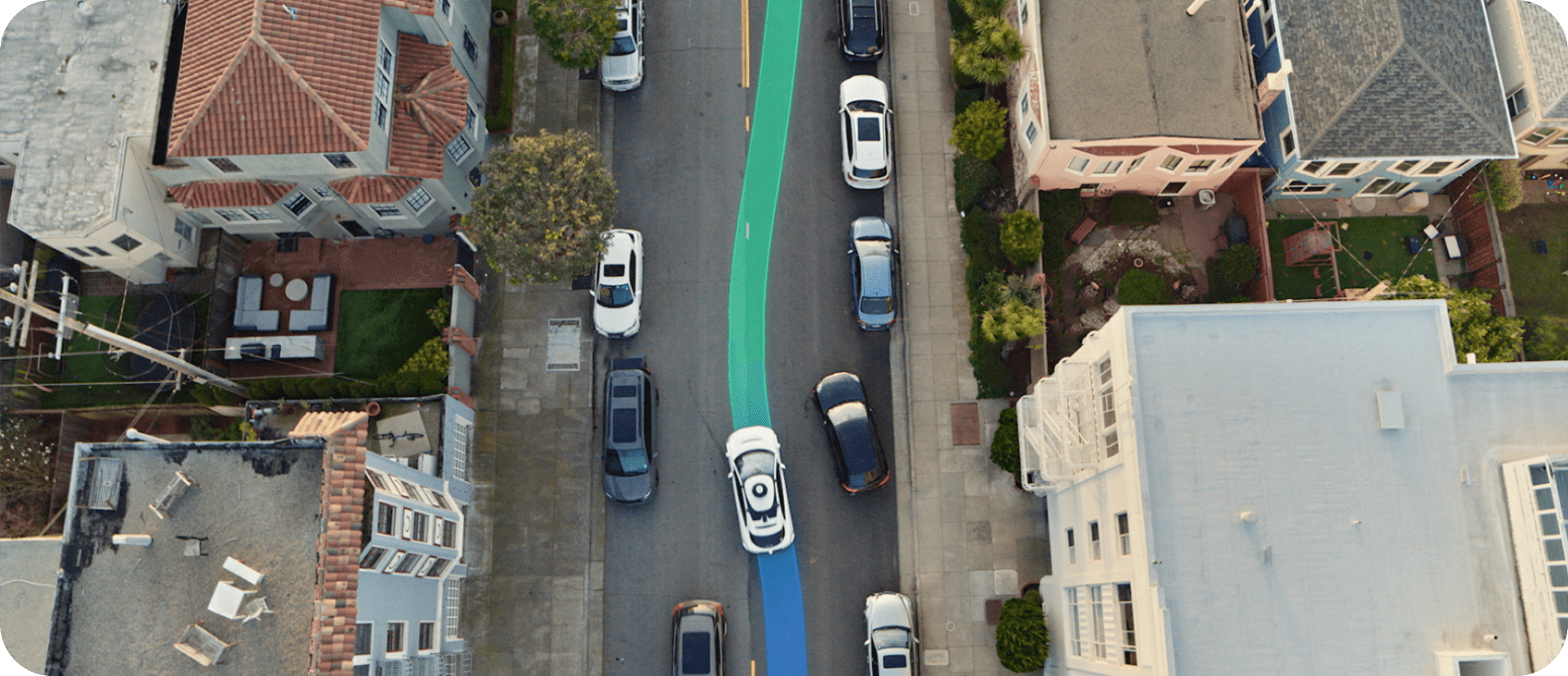Explore web search results related to this domain and discover relevant information.
In June 2022, Waymo announced a ... announced in late 2022. On December 13, 2022, Waymo applied for the final permit necessary to operate fully autonomous taxis, without a backup driver present, within the state of California....
In June 2022, Waymo announced a partnership with Uber, under which Waymo will integrate its autonomous technology into Uber's freight truck service. Plans to expand the program to Los Angeles were announced in late 2022. On December 13, 2022, Waymo applied for the final permit necessary to operate fully autonomous taxis, without a backup driver present, within the state of California.In December 2024, Waymo announced its first international expansion with testing in Tokyo, Japan in the neighborhoods of Shinjuku, Shibuya, Minato, Chiyoda, Chūō, Shinagawa, and Kōtō in partnership with Nihon Kotsu and Japan's GO taxi app.According to The Los Angeles Times, the "topics Waymo wants to keep hidden include how it plans to handle driverless car emergencies, what it would do if a robot taxi started driving itself where it wasn't supposed to go, and what constraints there are on the car's ability to traverse San Francisco's tunnels, tight curves and steep hills."Google's development of self-driving technology began in January 2009, led by Sebastian Thrun, the former director of the Stanford Artificial Intelligence Laboratory (SAIL), and Anthony Levandowski, founder of 510 Systems and Anthony's Robots.Waymo LLC, formerly known as the Google Self-Driving Car Project, is an American autonomous driving technology company headquartered in Mountain View, California. It is a subsidiary of Alphabet Inc., Google's parent company. The company traces its origins to the Stanford Racing Team, which ...


Tesla is a leader in AI for cars. They use it for their Autopilot system. This helps drivers steer, change lanes, and park. Waymo, owned by Google, is testing self-driving taxis.
Companies like Tesla, Waymo, and GM are leading the charge. Their cars can change lanes, park, and follow traffic rules automatically. Some even work as robo-taxis in certain cities.Discover how AI is revolutionizing the automotive industry, enhancing vehicle safety, transforming manufacturing, and delivering smarter, more efficient cars.AI is revolutionizing the automotive industry by enabling advanced driver assistance systems, predictive maintenance, and personalized in-car experiences. These innovations are not just making our roads safer, but also transforming how we interact with our vehicles.Artificial intelligence is changing the way we think about cars and driving. AI helps make vehicles safer, smarter, and more efficient.
Zoox is a purpose-built autonomous vehicle designed for riders, not drivers. Learn more about the Zoox robotaxi and the future of ride-hailing.

Tesla has taken so long working on this that the world is moving on around them. They could end up stuck supporting boring taxi services, while companies like Waymo are busy automating trucking or whatever else needs it. Time will tell what the biggest surprises are.
And now that trump took away the fines for not achieving CAFE, tesla no longer accumulates billions of dollars worth of clean air credits that they can sell. That’s gotta hurt. ... Uber made its money on tax and labor loopholes to exploit its workforce. It’s not like the taxi market is without sin.It's not just that. They were the first to promise 100% autonomous taxis over a decade ago.324 votes, 304 comments. 103K subscribers in the SelfDrivingCars community. News and discussion about Autonomous Vehicles and Advanced Driving Assistance Systems (ADAS).It's not even that because they can't charge and can't offer it to the public.

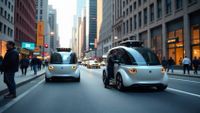
The company aims to build a more comprehensive network of autonomous vehicles that will contribute to the city’s smart transportation infrastructure. As demand for autonomous taxi services grows, Pony.ai plans to increase the size of its fleet and introduce more pickup points, allowing for ...
The company aims to build a more comprehensive network of autonomous vehicles that will contribute to the city’s smart transportation infrastructure. As demand for autonomous taxi services grows, Pony.ai plans to increase the size of its fleet and introduce more pickup points, allowing for greater convenience and accessibility.As companies like Pony.ai and Tesla continue to innovate and scale their services, it’s clear that the future of urban mobility will rely heavily on autonomous technologies. With driverless taxis becoming a reality, cities worldwide are set to witness a dramatic shift in how people travel, offering more sustainable, efficient, and personalized mobility options.Similarly, Europe is seeing its own advancements, such as Uber’s partnership with Momenta to test robotaxi services in Munich, Germany, starting in 2026. The collaboration between Uber and Momenta is aimed at integrating autonomous driving technology with Uber’s platform, bringing self-driving taxis to Europe.The rise of autonomous vehicle services, including Pony.ai’s robotaxi in Shanghai, marks a transformative shift in travel technology, reshaping urban mobility.
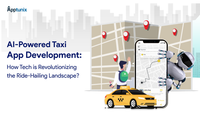
AI-powered taxi app development involves integrating AI technologies to enhance various aspects of a taxi service, taxi booking & dispatch system
Well, a few years back, safe and personalized rides with contactless payments at pocket-friendly prices seemed like a distant dream. Fast-forward to today, these features are the bare minimum of a taxi booking app development.The AI/ML algorithms analyze driver behavior, speed and acceleration, and brake patterns to share feedback and help them improve their performance. Pocket-friendly rides with online taxi booking apps are possible because of AI/ML.AI-based taxi booking apps blend numerous payment methods like debit/credit cards, wallet payment, UPI transaction etc. for a secure and flawless payment experience. Traditional taxi booking services are irksome because of unpredictable weather conditions, traffic updates, no real-time data availability and no GPS integration.Also Read: AI App Development in 2025: A Guide for Entrepreneurs & Businesses · The cost for taxi booking app development varies significantly based on the complexity level, chosen technology stack and the geographical location of the taxi app development company.

Uber has offered additional income to drivers from India: when there are no taxi orders, they can help train artificial intelligence.
This initiative is already operating in 12 cities in India, including Delhi and Mumbai — as part of the Uber AI Solutions program, which provides data labeling services to companies in the field of artificial intelligence, autonomous vehicles, and other technologies.The task is to label photos, decipher texts and receipts right in the Uber app.Among the company’s clients are game developer Niantic, which has turned into an AI startup, and autonomous vehicle manufacturer Aurora.
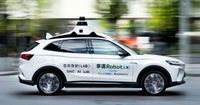
uber and momenta have announced at IAA mobility 2025 that they’re set to test AI-driven autonomous taxis in munich starting in 2026.
Uber and Momenta have announced at IAA Mobility 2025 that they’re set to test AI-driven autonomous taxis in Munich, Germany, starting in 2026. First introduced in May 2025, the agreement hopes to bring the driverless transport system around Europe after it is implemented in the US and China.Munich, Germany, serves as the initial testing ground for the collaboration, with Uber and Momenta, a Chinese autonomous vehicle technology company, aiming to deploy Level 4 autonomous vehicles on Uber’s ridesharing platform as the end goal. When this happens, self-driving taxis can start roaming around Europe as part of its daily transport system.At the moment, there are no commercial autonomous robotaxis available around the continent, mainly due to funding, (safety) regulations, and proper infrastructure. If the companies’ testing and all the necessary checks after have been completed and approved, passengers in Europe – at least in Munich, Germany – can request autonomous taxis through Uber using Momenta’s AI-driven vehicles.Momenta has a tech-driven process before taking its autonomous taxis to Uber. The company employs what it calls a two-leg strategy for autonomous vehicle development, with the first leg involving deploying Advanced Driver Assistance Systems. This approach allows Momenta to collect real-world driving data from 400,000 vehicles already on roads.
The firm’s latest autonomous driving technology was revealed earlier this year at the Shanghai Auto Show, where it was showcased in models produced by Toyota, and domestic automakers BAIC and GAC. Now one of these – the self-driving taxi based on GAC’s second-generation Aion V – is ...
The firm’s latest autonomous driving technology was revealed earlier this year at the Shanghai Auto Show, where it was showcased in models produced by Toyota, and domestic automakers BAIC and GAC. Now one of these – the self-driving taxi based on GAC’s second-generation Aion V – is out testing in two mega cities in Guangdong province, Guangzhou and Shenzhen.And finally – as evidenced by the fact that it has already been applied to GAC, Toyota and BAIC cars – the tech can be adapted across multiple vehicle platforms. Related:Self-Driving Taxis Expand Further Into the Middle EastPony.ai now claims to have recorded nearly 28 million miles in autonomous test mileage across the world. Alongside Guangzhou and Shenzhen, it is also running self-driving taxis in China’s other two Tier One cities, Shanghai and Beijing.The program is part of a wider effort that the company hopes will see it operate a fleet of self-driving taxis in excess of a thousand by the end of the year.
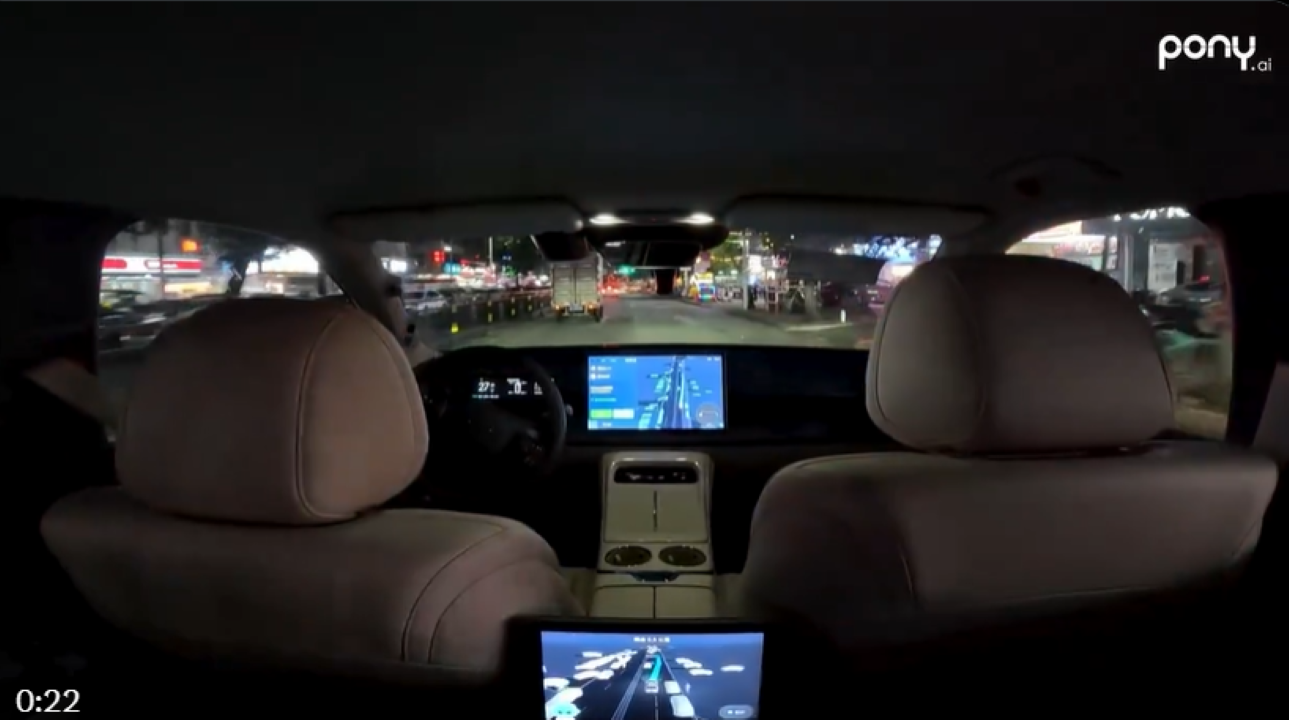
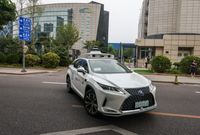
Chinese robotaxi startup Pony.ai said it has obtained the first permit to charge fares for fully driverless taxis in parts of a business district of Shenzhen.
In the latest step towards building a revenue-generating robotaxi business, Chinese startup Pony.ai said it has obtained the first permit to charge fares for fully driverless taxis in core parts of a business district of Shenzhen.BEIJING — In the latest step toward building a revenue-generating robotaxi business, Chinese start-up Pony.ai said it has obtained China's first permit to charge fares for fully driverless taxis in core parts of a business district of Shenzhen.Pony.ai has already operated robotaxis in parts of a neighboring Shenzhen district and can run taxis with human staff inside on routes that connect to the Shenzhen international airport and Shenzhen Bay Checkpoint on the border with Hong Kong.The permit allows Pony.ai to charge fares for rides — without any human staff inside — from the Shenzhen international airport and Shenzhen Bay Port to key parts of the district of Nanshan, home to tech giants Tencent and DJI.
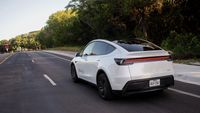
All rights reserved. FAQ - New Privacy Policy ... Billionaire Dan O'Dowd discusses why he is critical of Tesla's full self-driving technology on 'The Claman Countdown.' The burgeoning self-driving taxi industry signed on a new player this weekend as Tesla officially debuted its robotaxi service ...
All rights reserved. FAQ - New Privacy Policy ... Billionaire Dan O'Dowd discusses why he is critical of Tesla's full self-driving technology on 'The Claman Countdown.' The burgeoning self-driving taxi industry signed on a new player this weekend as Tesla officially debuted its robotaxi service in Austin, Texas on Sunday.A Tesla Inc. robotaxi on Oltorf Street in Austin, Texas, US, on Sunday, June 22, 2025. The launch of Tesla Inc.'s driverless taxi service Sunday is set to begin modestly, with a handful of vehicles in limited areas of the city.FLEET OF AMAZON-BACKED SELF-DRIVING TAXIS WILL SOON HIT THE LAS VEGAS STREETS WITH PUBLIC RIDESElon Musk's Tesla enters the self-driving taxi game, an industry with big names like Waymo and Zoox in the U.S.
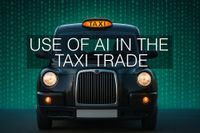
AI is starting to creep into nearly every part of the taxi and private hire trade. From dispatch to compliance, from customer complaints to pricing and matching, there’s growing interest in what artificial intelligence can do. But with that comes a serious question for taxi licensing councils ...
AI is starting to creep into nearly every part of the taxi and private hire trade. From dispatch to compliance, from customer complaints to pricing and matching, there’s growing interest in what artificial intelligence can do. But with that comes a serious question for taxi licensing councils and the Government: should there be clearer rules before algorithms start making decisions that affect drivers’ livelihoods?There’s no doubt AI is useful.Take compliance algorithms. Some platforms now monitor everything from cancellations and rerouting to how many jobs a driver accepts. These numbers can be used to decide whether a driver stays on the platform, gets penalised, or flagged to licensing. But how reliable are these systems?There’s no doubt AI is useful. Apps can now predict demand, suggest busy spots, and optimise airport pickups better than ever.But when AI shifts from being a tool that helps to one that is used to judge, the industry has every right to ask where the line should be drawn.
Waymo—formerly the Google self-driving car project—makes it safe and easy for people & things to get around with autonomous vehicles. Take a ride now.
We’re on a mission to be the world's most trusted driver.Making it safer, more accessible, and more sustainable to get around — without the need for anyone in the driver’s seat.Your ride, your way - safe, private and sustainable.Welcoming all riders in the City of Stars!
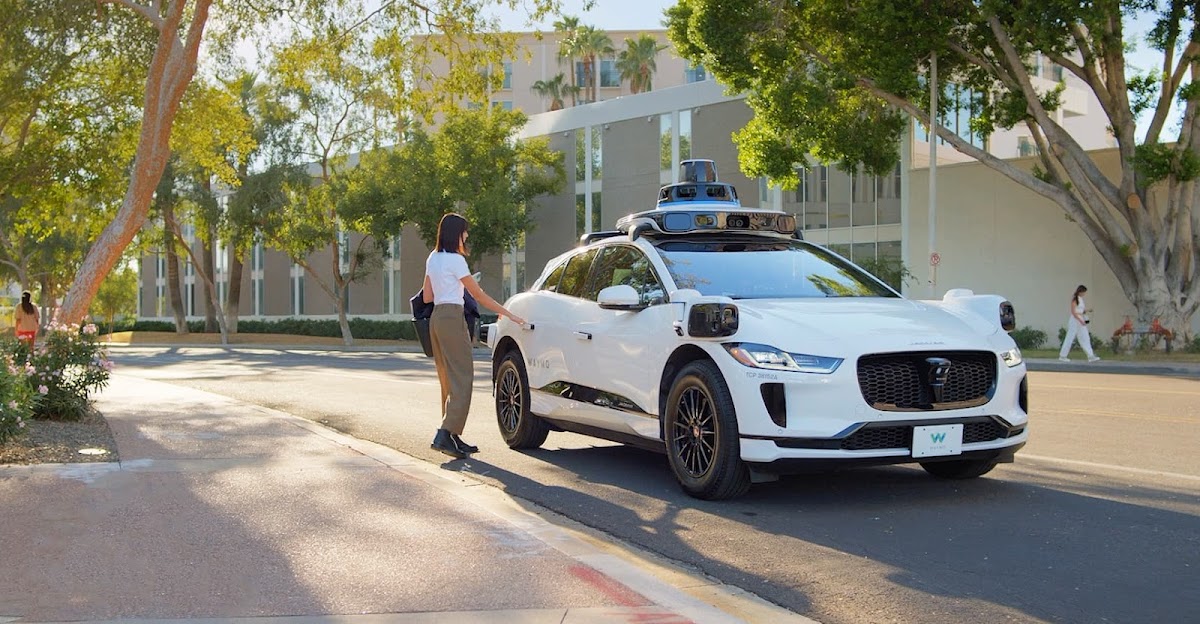
Enjoy the videos and music you love, upload original content, and share it all with friends, family, and the world on YouTube.
My longest contiguous shift was ... this is how big bucks are made. if you want nice 9-5 job, get ready for salaries equivalent to the bus driver and taxi driver salaries....
My longest contiguous shift was 29 hours in a row (then sleep on the couch in the office) my peer a Chinese dude had longest shift on coffee and redbull 35 hours, I wasn't at the company at the time but folks say he's not lying, they were troubleshooting some database related shit with massive amount of losses $$ for company if they won't fix it ASAP so nobody went to sleep. Anyways, just be sure what you're getting into. if you want big bucks - see the above, this is how big bucks are made. if you want nice 9-5 job, get ready for salaries equivalent to the bus driver and taxi driver salaries.Posted by u/michaelnovati - 1 vote and 28 commentsThis post isn't about bootcamps but rather it's about why technology is so exciting and if you are passionate about technology, I hope this motivates…A subreddit dedicated to questions and discussions about coding bootcamps.

Learn more about how Tesla is focused on creating a sustainable future by producing a fleet of autonomous vehicles for the Robotaxi network.
We’re bringing these autonomous rides to you today—starting with Model Y.Cybercab, our fully autonomous vehicle, will begin offering rides in your area in the future.Be among the first to take an autonomous ride in Model Y.Complete the form below to get updates about when our Robotaxi service is launching near you.
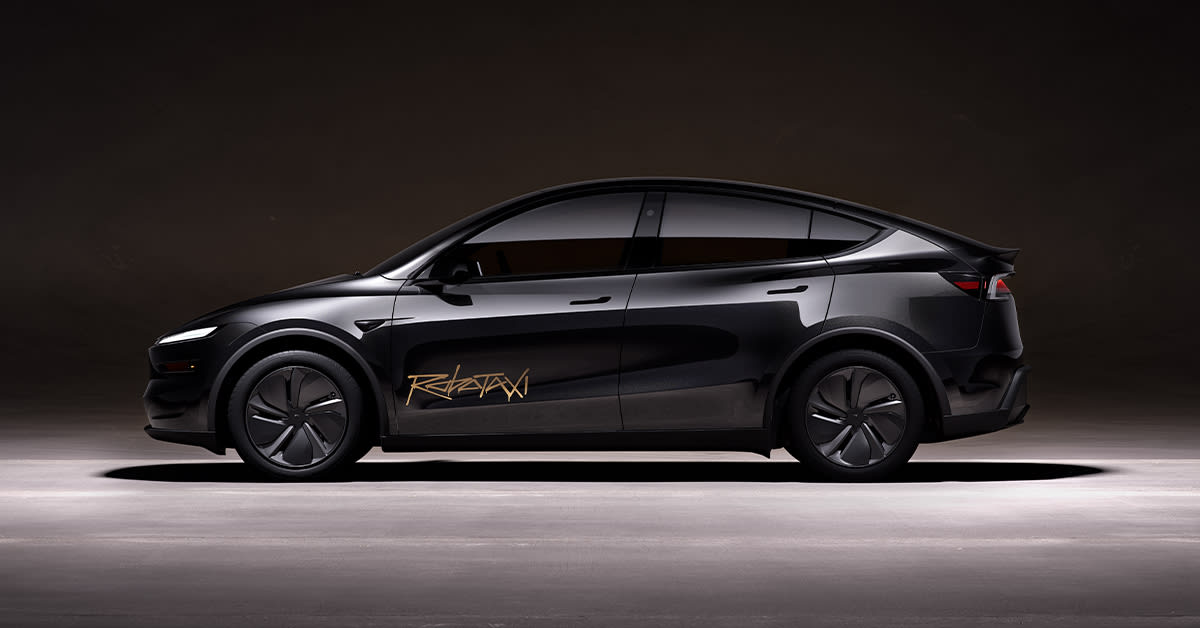
At present, it is not only technical issues that hinder the widespread use of robotaxis, but also social issues. First, consumers' concerns about the reliability and safety of self-driving taxis are a major obstacle. For example, system failures during the service process and the risk of accident ...
At present, it is not only technical issues that hinder the widespread use of robotaxis, but also social issues. First, consumers' concerns about the reliability and safety of self-driving taxis are a major obstacle. For example, system failures during the service process and the risk of accident perception will reduce potential users.September 2016 – Uber launched its autonomous taxi service in Pittsburgh, Pennsylvania, with an initial fleet size of 14 vehicles, with a planned fleet of around 100 cars. This was open to the public through the regular Uber app, with customers being assigned human or autonomous cars interchangeably.July 2024 – In Wuhan, Baidu's attempts at commercializing Apollo Go robotaxis received massive attention from social media. Base fares started as low as 4 Chinese yuan (0.55 USD), compared to 18 yuan (2.48 USD) for a human-driven taxi. The rapid adoption of driverless taxis rattled China's gig economy workforce.Waymo also signed a deal with Lyft to collaborate on self-driving cars in May 2017. In November 2017, Waymo revealed it had begun to operate some of its automated vehicles in Arizona without a safety driver behind the wheel. And in December 2018, Waymo started self-driving taxi service, dubbed Waymo One, in Arizona for paying customers.In January 2020, GM subsidiary Cruise exhibited the Cruise Origin, a Level 4–5 driverless vehicle, intended to be used for a ride hailing service. In February 2022, Cruise started driverless taxi service in San Francisco. Also in February 2022, Cruise petitioned U.S.


Explore how AI-powered robo-taxis are set to replace human drivers, offering safer, smarter, and fully autonomous urban transportation.
AI processes vast amounts of data from sensors (cameras, LiDAR, radar) to perceive the environment, predict movements and control the vehicle safely. Before robo-taxis, transportation was riddled with issues like human error, unpredictable driver behavior, inconsistent ride quality, and the constant need for human attention.With urban populations surging and traffic fatalities increasing, there was a dire need for safer more efficient alternatives. Robo-taxis are the answer to that call. These intelligent vehicles combine cutting-edge AI with real-time data analysis to transform mobility.These autonomous, AI-powered vehicles are designed to navigate roads, detect traffic, and safely transport passengers—entirely without human intervention. Built with cutting-edge sensors, real-time data processing, and machine learning, robo-taxis are rewriting the rules of urban mobility, making transportation smarter, safer, and fully self-driven.Natural Language Processing (NLP): Enables voice-based interactions for smoother passenger control and experience. Inside the robo-taxi, voice assistants allow passengers to control the ride hands-free—requesting destinations, updates, or even nearby stops.

Uber’s AI Taxi Cab Initiative aims to improve traditional ride-hailing service using AI and introduce self-driving cars in the future.
Uber is working with Wayve, a UK-based AI company, to trial driverless taxis in London in 2026.As part of the AI taxi cab project, Uber has also introduced a smart charging feature powered by AI in its app.From route planning to safety alerts, see how AI is reshaping the private hire industry without replacing PCO drivers.AI is transforming the private hire industry in many ways.
Fully autonomous rides are coming to LA County. With millions of miles of driving experience across multiple cities, we can’t wait to bring Waymo One, our fully autonomous ride-hailing service, to you. Join the waitlist and we’ll reach out when it's your turn to ride.
From Santa Monica Pier to Echo Park, Waymo One is your new favorite way to get around. With millions of rides served, we’re excited to offer a safe way to get around the City of Angels.Download the Waymo One app and take a fully autonomous ride today.Download the Waymo One app and create an account to get started.Choose your destination and we’ll pick you up and drop you off.
